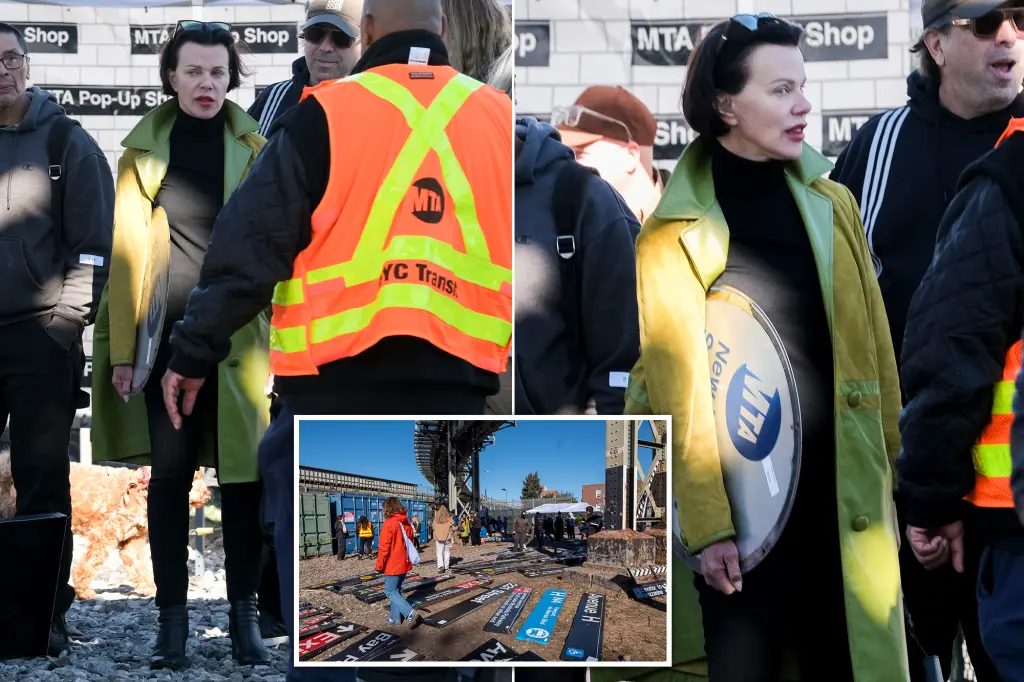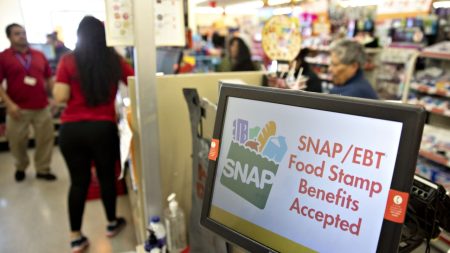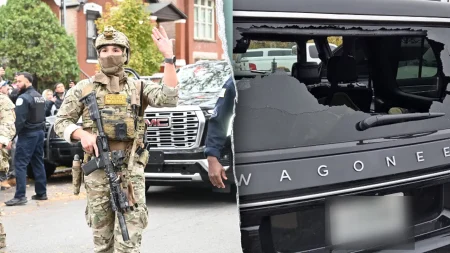MTA’s Nostalgic Garage Sale: A Treasure Hunt for New Yorkers
The Metropolitan Transportation Authority (MTA) transformed into an unexpected shopping destination on Thursday, hosting a massive garage sale of vintage subway signs and transit memorabilia that attracted hundreds of enthusiastic New Yorkers. The Collectibles Pop-Up shop in Brooklyn became a gathering place for transit enthusiasts, bargain hunters, and even celebrities looking to take home a piece of New York City’s iconic transportation history. Unlike previous sales that required reservations, this first-come-first-serve event created an atmosphere of excitement and nostalgia as shoppers lined up to browse through decades of subway signage. Among the crowd was a familiar face—actress Debi Mazar, known for her roles in “Goodfellas,” “Entourage,” and “Younger,” who expressed her love for the city’s transit system while purchasing a sign from the 1980s for $500. “I chose this because I can carry it on the airplane. And I’m a nostalgic New Yorker,” Mazar explained, revealing her preference for subway travel over taxis and her Queens upbringing. Her presence highlighted how deeply the subway system is woven into New York’s cultural fabric, connecting celebrities and everyday New Yorkers through shared urban experiences.
The event revealed the profound personal connections many New Yorkers have with their transit system, as customers eagerly purchased signs from their daily commute routes or stations holding special meaning in their lives. Zach Temkin, a 32-year-old software designer, specifically sought out a G train sign for $150 because “we both take the G a lot.” Others like Jelani Triskell, a 29-year-old bartender, selected signs from areas tied to formative life experiences, explaining his choice of a Cadman Plaza/Cranberry Street/Henry Street exit sign because “my sister and I went to high school around there. So it’s more nostalgic.” These purchases weren’t merely decorative items but physical embodiments of personal narratives and daily routines, transforming utilitarian transit markers into meaningful keepsakes. The sale demonstrated how the subway system serves as more than just transportation—it’s a shared experience that connects neighborhoods, memories, and life chapters for millions of residents.
What made the event particularly fascinating was witnessing the creative repurposing ideas customers had for their transit treasures. Beyond simple wall hangings, shoppers envisioned artistic transformations for their newly acquired pieces. Anu Jasingh, 32, purchased wheelchair accessibility signs with plans to “make that into a lamp as an art project,” while Bella Virgilia, a 29-year-old engineer and cyclist, found humor and personal relevance in a sign warning that “Bicycles or other property attached to these railings will be removed.” She appreciated authentic details like “the green paint on the back that they use for the railings,” planning to display it playfully beside her bike at home. These creative adaptations show how transit signage—designed for pure functionality—can be reimagined as art, conversation pieces, and expressions of personal identity when removed from their original context.
The pricing structure of the sale created an interesting dynamic, with items ranging from affordable souvenirs to investment pieces costing thousands of dollars. This price spectrum made the event accessible to various budgets while highlighting the collectible value of certain historic signs. Adrian Booth, 61, who purchased a Herald Square sign as a gift for her train-enthusiast son, noted her practical considerations: “I could also carry it, and it wasn’t $2500.” Similarly, Mazar’s comment about choosing a sign she “can carry on the airplane” revealed the thoughtful calculations shoppers made when selecting items. The higher-priced items represented not just transit memorabilia but pieces of New York City history, with their value determined by rarity, condition, and cultural significance. This pricing structure transformed everyday objects into collectibles with investment potential, adding another dimension to their appeal beyond nostalgic attachment.
The pop-up shop exemplified how public transportation infrastructure transcends its utilitarian purpose to become part of cultural identity and personal expression. Each sign—whether directing passengers to subway platforms, warning against prohibited behaviors, or indicating accessibility features—originally served a purely functional role in the complex transit system. Yet when decommissioned and offered for sale, these objects transformed into artifacts representing specific eras of city history, design aesthetics, and shared urban experiences. Customers weren’t just purchasing old signs; they were acquiring tangible connections to New York’s evolving story and their place within it. The enthusiasm for these items reveals how deeply transit infrastructure embeds itself in city dwellers’ consciousness, becoming inseparable from their understanding of home and community identity.
As the event continued into Friday at its Gravesend location on Avenue X, it represented more than a creative fundraising initiative for the MTA—it was a celebration of New York City’s unique relationship with its transit system. While other cities might struggle to generate excitement about decommissioned infrastructure items, New Yorkers lined up eagerly to claim pieces of their subway system. This enthusiasm speaks to the special place the subway holds in the city’s identity: despite daily complaints about delays or crowded cars, the system remains a beloved, essential thread in New York’s urban fabric. The success of the sale demonstrates how shared infrastructure can foster community connection and collective memory. As buyers carefully selected their pieces of transit history, they weren’t just decorating their homes but preserving fragments of a shared urban experience that defines New York City living across generations. In transforming discarded signage into cherished possessions, the event revealed how deeply New Yorkers identify with the very systems that move them through their city—finding beauty, nostalgia, and personal meaning in the most utilitarian aspects of urban life.











